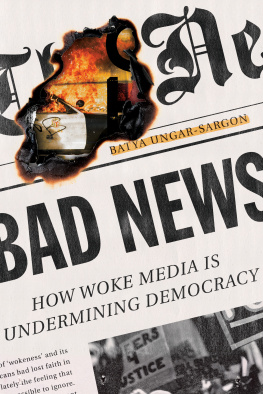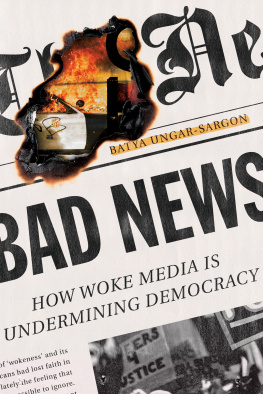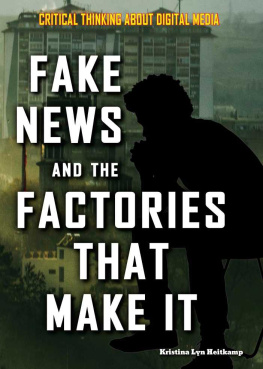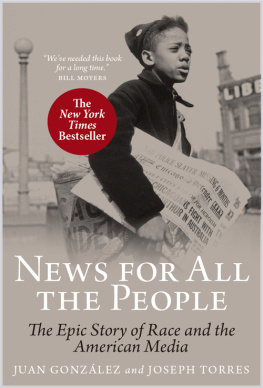2021 by Batya Ungar-Sargon
All rights reserved. No part of this publication may be reproduced, stored in a retrieval system, or transmitted, in any form or by any means, electronic, mechanical, photocopying, recording, or otherwise, without the prior written permission of Encounter Books, 900 Broadway, Suite 601, New York, New York, 10003.
First American edition published in 2021 by Encounter Books, an activity of Encounter for Culture and Education, Inc., a nonprofit, tax-exempt corporation. Encounter Books website address: www.encounterbooks.com
Manufactured in the United States and printed on acid-free paper. The paper used in this publication meets the minimum requirements of ANSI/NISO Z39.481992 (R 1997) (Permanence of Paper).
FIRST AMERICAN EDITION
Jacket and case images by Shutterstock.com: schankz (burn hole); DOCTOR BLACK (texture); GrandAve (Defund the Police); Caf Racer (torn posters); etraveler (#MeToo); Dmitriip (graffiti); Mikalai Stseshyts (Anarchy symbol); cristovao (handshake); Garno Studio (social media symbol); Hayk_Shalunts (police car); KIrI (dot texture)
Case images by Alamy Stock Photo:
Robert K. Chin (protest signs); Matt Bills (Stop Hate); PjrStudio (Trump tweets)
Image of Donald Trump Samira Bouaou/The Epoch Times
LIBRARY OF CONGRESS CATALOGING-IN-PUBLICATION DATA
Names: Ungar-Sargon, Batya, 1981 author.
Title: Bad News: How Woke Media Is Undermining Democracy / Batya Ungar-Sargon. Description: First American edition. New York: Encounter Books, 2021. Includes bibliographical references and index.
Identifiers: LCCN 2021010941 (print) | LCCN 2021010942 (ebook) ISBN 9781641772068 (hardcover) | ISBN 9781641772075 (ebook)
Subjects: LCSH: Mass mediaPolitical aspectsUnited States. Press and politicsUnited States. | Right and left (Political science)United StatesHistory21st century.
Classification: LCC P95.82.U6 U54 2021 (print) | LCC P95.82.U6 (ebook) DDC 070.4/4932dc23
LC record available at https://lccn.loc.gov/2021010941
LC ebook record available at https://lccn.loc.gov/2021010942
Interior page design and composition by Bruce Leckie
1 2 3 4 5 6 7 8 9 20 21
For my Zo,
TABLE OF CONTENTS
O n November 16, 2018, CNNs Don Lemon hosted a panel discussion about white women who voted for Donald Trump. There was no real news peg for the story; the president hadnt spent the morning tweeting about anything specific, and it was ten days after the midterm elections, which Lemon nevertheless valiantly torqued into an awkward hook for the panel: A wave of women, white, black and brown are sweeping into office after the 2018 election. Does Donald Trump still have the support of a majority of white women and if so, why is that? Maybe thats why the panel happened at all; a Friday night capping off a slow news week was as good an opportunity as any to bring up the increasingly hot topic of white supremacy. In fact, the only remarkable thing about the panel was how unremarkable it was, one of a thousand such panels that have graced American airwaves in recent years.
Lemons guests were Kirsten Powers, a senior CNN political analyst; Alice Stewart, a CNN commentator playing the supporting role of token Republican; and Stephanie Jones-Rogers, a professor of history at UC Berkeley, whose book They Were Her Property: White Women as Slave Owners in the American South had been cited in an article on Vox, a liberal opinion site that caters to millennials.
Powers had much to say about Donald Trumps female supporters. People will say that they support him for reasons other than his racist language, she told Lemon. Theyll say, Well Im not racist; I just voted for him because I didnt like Hillary Clinton. And I just want to say that thats not, that doesnt make you not racist. It actually makes you racist, Powers explained. As for why white women do it, she went on, I think we have to remember that the white patriarchal system actually benefits white women in a lot of ways.
Professor Jones-Rogers concurred, tying support for Trump to slavery. So, as a historian, I explore white womens economic investments in the institution of slavery, she said. And what that has led me to understand is that theres this broader historical context that we need to keep in mind when were looking at white womens voting patterns today, and as we look at their supporttheir overwhelming support of Donald Trump. Lemon jumped in to note that just over half of white women had voted for Trumphardly what would constitute overwhelming support. Jones-Rogers clarified: What I meant by overwhelming was emotionally overwhelming.
The sole Republican, Alice Stewart, was briefly allowed to respond, and voiced her resentment at being called racist for her vote for Trump, whom she chose for his policies. But Powers interjected: Its not just Republican women who have a problem with racism but all white women, indeed, all white people. Every white person benefits from an inherently racist system that is structurally racist, so we are all part of the problem, Powers said. Jones-Rogers heartily agreed.
It was a scene as inescapable today as it would have been rare ten years ago.
Theres a view thats taken hold of Americas national news media. Its not a new one; its long been a staple among academics and activists. But increasingly, it has made its way out of the hallowed hallways of sociology and ethnic studies departments and seeped into Americas mainstream via our leading national news media outlets. Its the belief that America is an unrepentant white-supremacist state that confers power and privilege on white people, which it systematically denies to people of color. Those who hold this view believe an interconnected network of racist institutions infects every level of society, culture, and politics, imprisoning us all in a power binary based on race regardless of our economic circumstances. And the solution, according to those who hold this view, is not to reform institutions that still struggle with racism but to transform the consciousness of everyday Americans until we prioritize race over everything else.
This view is known as antiracism, or by the shorthand of being woke, slang for being awake to whats called systemic or institutional racism. And though many in this ideological camp pay lip service to the idea that race is a social construct rather than a biological reality, they view race as the most important and inescapable fact of American life, reducing Americas past and present to a binary of white oppressors and black and brown victims.
For a long time, this view was the province of far-left activists and academics. But over the past decade, its found its way into the mainstream, by and large through liberal media outlets like the New York Times, NPR, MSNBC, the Washington Post, Vox, CNN, the New Republic, and the Atlantic. Once fringe, the idea that America is an unabated white-supremacist country and that the most important thing about a person is the immutable fact of their race is the defining paradigm of today, the one now favored by white liberals to describe our current moment. And it was when white liberals began espousing this woke narrative that it went from being mainstream to being an obsession; and even, most recently, to being an outright moral panic. The obsessive enthusiasm for wokeness among white liberals created a feedback loop with their media outlets that was then reinforced through a new and staggering uniformity of views across once distinct publications and news channels, showing up in ubiquitous television segments like Don Lemons, and articles like Is the White Church Inherently Racist? the bread and butter of the











